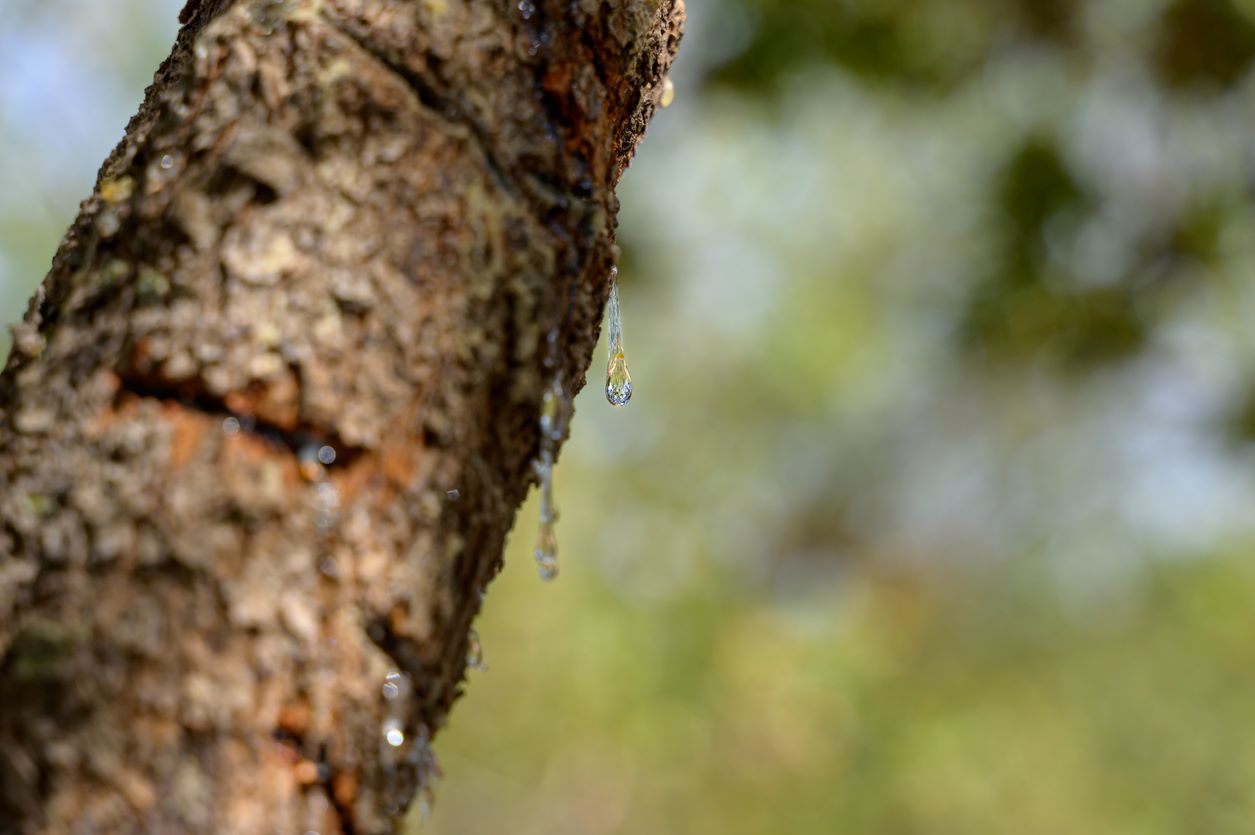
The sap
When talking about sap, it is important to remember that it is divided into two types which each have a different role and circulate differently, but which, we will see, are essential to each other.
Raw sap or rising sap
It finds its origin in the roots and rises towards the leaves. It is essentially composed of water and soil minerals, such as potassium, magnesium, etc. which play an essential role in the biological processes of plants.
Elaborated sap or descending sap
It finds its origin in the leaves where it is produced by photosynthesis. It also contains water, but is rich in sugars synthesized during photosynthesis. The sap produced is necessary for the growth of plants and their development. It is also what allows them to store energy.
Two circulation networks for two types of sap
Like blood in the human body, sap circulates in vessels, but each type of sap is transported within the plant by a different vascular network.
The xylem
This network is responsible for transporting raw sap. It is made up of tubes formed by dead and empty cells placed end to end in which sap circulates from the roots to the aerial parts. This network is located just under the bark and is the most imposing.
Phloem
This network is responsible for transporting the sap produced. Here again, it is made up of tubes formed by cells connected to each other. Unlike xylem, phloem does not have a precise direction of circulation. It takes the produced sap where the plant needs it most, whether from top to bottom or bottom to top, from right to left or from left to right.
In fact, it can take the sap from the leaves to the roots which will build up sugar reserves, from the leaves to the fruits to promote their development or from the roots to the buds to help them open.
How does sap rise in trees?
Yes, sap is often compared to the blood of living beings, but in the latter, it is the heart which serves as a pump to ensure the circulation of vital fluid to the organs. In plants, no heart! But then, how does the sap manage to move without the help of a pump, several meters high in the case of trees? The answer to this question lies in the fact that, to achieve this feat, plants resort to three phenomena different ones that are complementary to each other.
Root pressure
THE roots absorb water and nutrients from the soil by osmosis using absorbent hairs. This absorbed water will exert pressure on the roots, which will push the raw sap upwards into the xylem. But this first pumping stage does not allow the sap to circulate throughout a large tree, without other mechanisms the sap could not rise beyond a few meters.
Capillarity
This phenomenon allows the liquid to move in porous tissues. This is the case for raw sap in the xylems. The liquid will thus be able to circulate from one point to another by attraction. But again, this is not enough.
Perspiration
A large part of the circulation of sap is based on this third phenomenon. It is therefore essential. Sweating takes place at leaf level which are pierced with a multitude of small holes, the stomata, through which the water evaporates. To help you understand the extent of this transpiration, let’s take the example of a corn plant: it loses around 60 liters of water during its growth period, simply by transpiration.
The other point to know to fully understand why transpiration causes sap to rise is a physical property of water: water molecules weave unbreakable hydrogen bonds between them. These bonds are very important, because when water molecules evaporate, they pull others up through these bonds. This suction force thus makes it possible to raise the entire column of sap to the entire height of the plant when it sweats.

